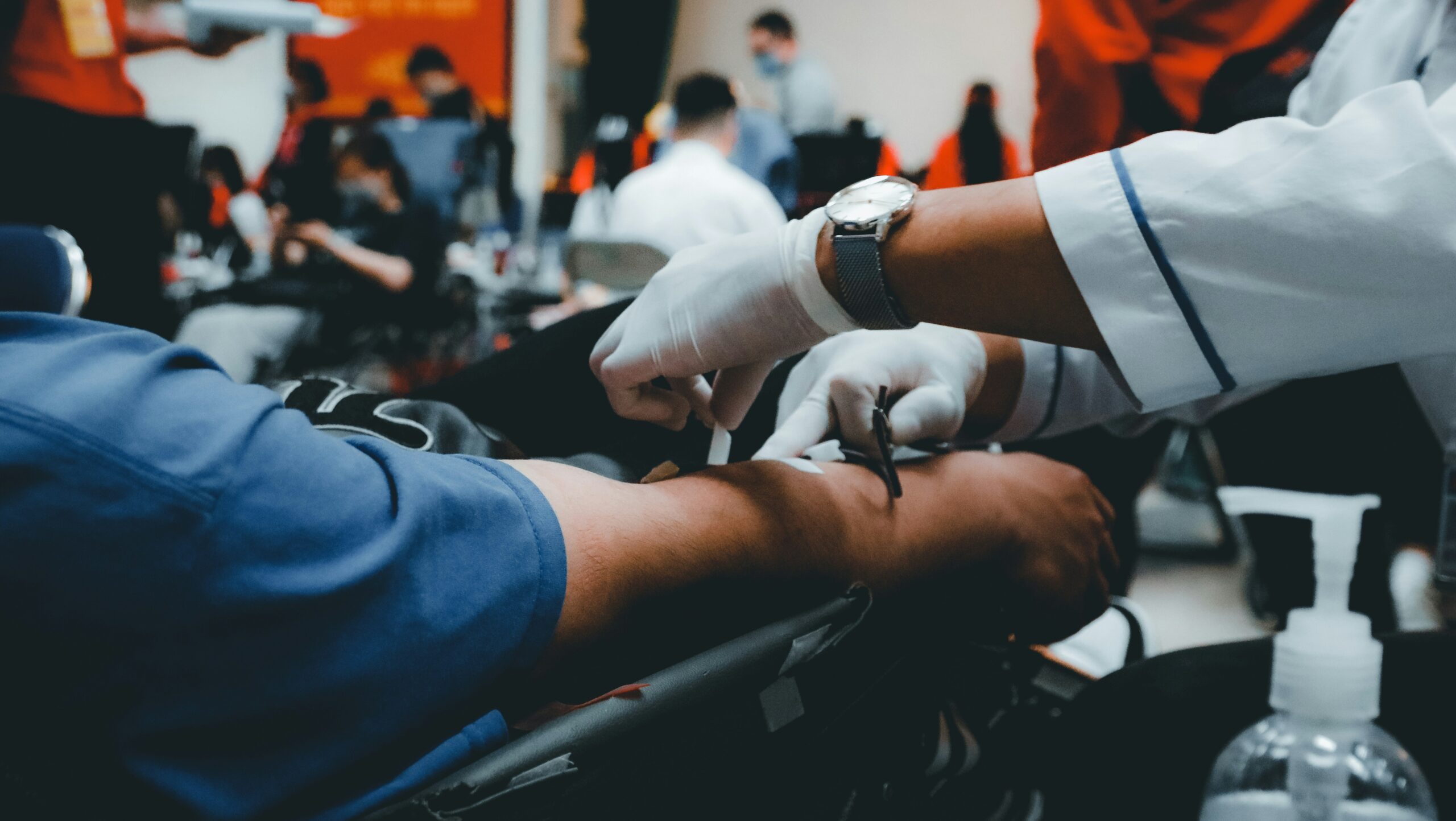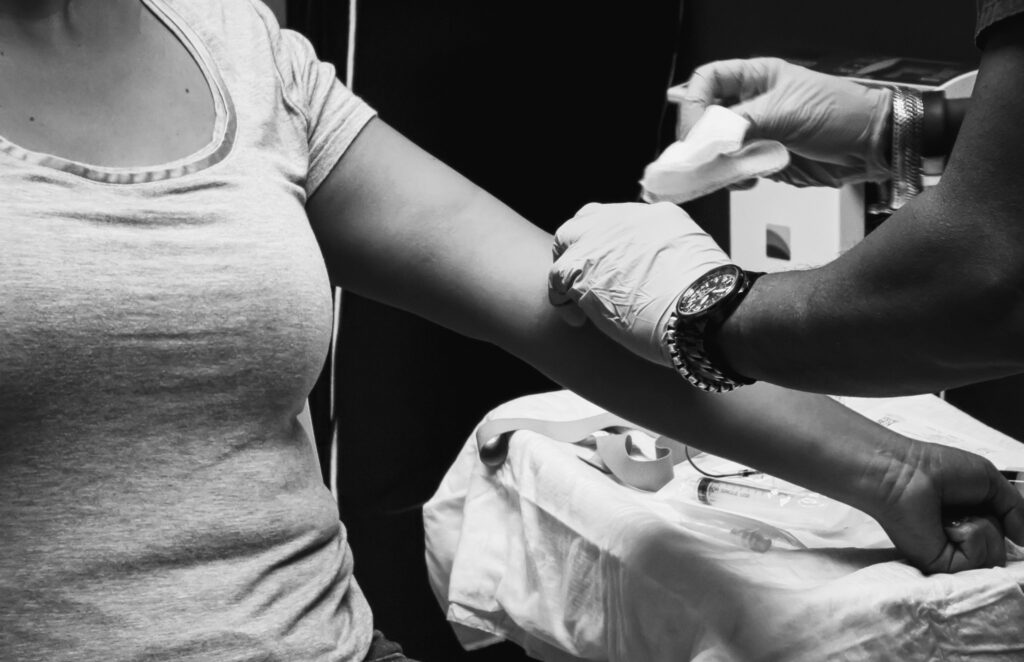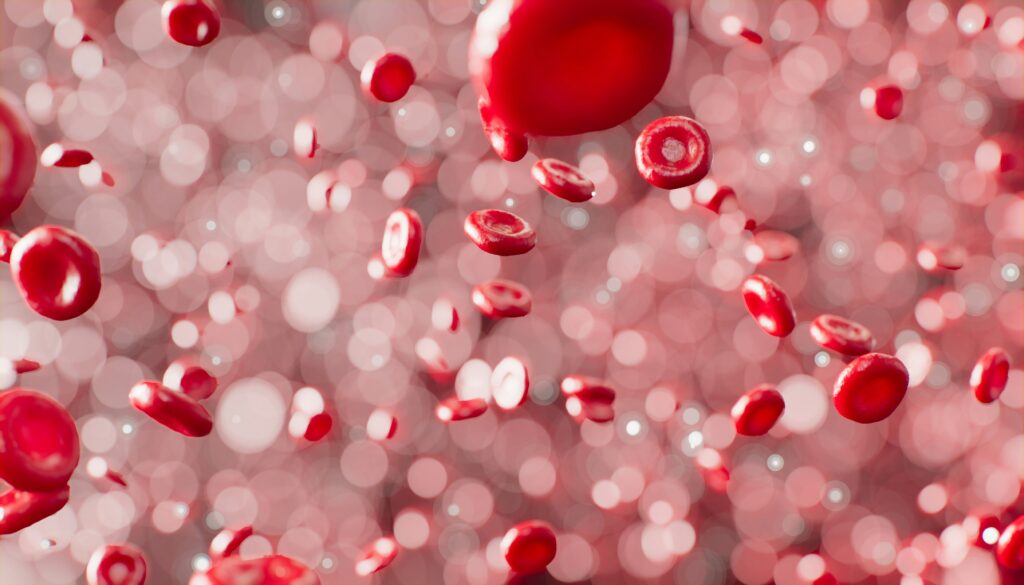Your cart is currently empty!

What Happens After Blood Donation?
Every day, countless people rely on blood donations to survive. Some need it during surgery, others for cancer treatment or recovery after an accident. However, there’s always a need for more blood donors to ensure that hospitals and clinics have enough to meet the demand. That’s why we celebrate January as National Blood Donor Month. It’s a time to honor those who give the gift of life and inspire others to join in.
Blood donations are essential for saving lives. Yet many people don’t realize just how important their contributions truly are. A single donation can make a difference for multiple patients, and blood centers across the country urgently need your help. In this post, we’ll explore why donating blood is so important, how you can donate, and the different types of blood donations that can make an impact.

Importance of Blood Donation
Blood donation is one of the simplest and most effective ways to make a direct and lasting impact on the lives of others. Each year, millions of people depend on blood donations for vital treatments, surgeries, and emergency care. Without the generosity of blood donors, many of these life-saving procedures would not be possible.
Meeting the Need for Blood
Hospitals and medical centers rely on a constant supply of blood for various needs, including:
- Emergency Care: Accident victims and patients in trauma often require immediate blood transfusions.
- Surgery: Major surgeries, including heart surgery and organ transplants, rely heavily on blood donations.
- Cancer Treatments: Chemotherapy often damages blood cells, so cancer patients need blood and platelets to help them recover.
- Chronic Conditions: Patients with conditions like sickle cell anemia or hemophilia require regular blood transfusions to manage their conditions.
The Shortage of Blood Donations
Unfortunately, blood donations don’t last forever. Red blood cells, for example, have a shelf life of only 42 days, while platelets are only viable for about five days. This makes it essential for donors to give regularly to maintain a steady supply. Every donation helps meet the needs of patients, but without consistent contributions from donors, hospitals can face shortages, especially during critical times like natural disasters or emergencies.
How Your Donation Saves Lives
One donation can save multiple lives. Blood is separated into different components: red blood cells, plasma, and platelets, which can be used to treat different conditions. By donating just once, you can help a wide variety of patients in need, from those recovering from surgery to those undergoing cancer treatments or dealing with trauma. The simple act of donating blood is a powerful way to make a lasting impact in your community.
In summary, donating blood is not just about helping one person; it’s about being part of a larger, life-saving network. Your donation could be the difference between life and death for someone in need, and that’s why your contribution is so incredibly valuable.
How to Donate Blood
Donating blood is a simple and safe process that only takes about an hour of your time. Whether you’re donating for the first time or you’ve done it before, the process might feel unfamiliar. This step-by-step guide will help you understand how to donate blood and what to expect.
Preparing for the Donation
Before you donate blood, there are a few things to keep in mind:
- Eligibility: Donors typically need to be at least 17 years old (16 with parental consent in some states), weigh at least 110 pounds, and be in good general health. You should be free of any cold or flu symptoms and not have recently traveled to areas with known disease outbreaks.
- Eat and Drink: It’s best to eat a healthy meal before donating blood and drink plenty of water to stay hydrated. Avoid fatty foods, as they can interfere with blood testing.
- Bring ID: Bring a valid form of identification, such as a driver’s license, and be ready to complete a health screening questionnaire.
The Blood Donation Process
Once you arrive at the donation center, here’s what you can expect:
- Registration: You’ll fill out a donor questionnaire, providing information about your health history. This is to ensure that blood donation is safe for both you and the recipient.
- Health Screening: A healthcare professional will check your blood pressure, temperature, and hemoglobin levels to make sure you’re fit to donate.
- The Donation: A trained professional will insert a needle into your arm to collect about one pint of blood, which typically takes around 10-15 minutes. The process is safe and minimally uncomfortable for most people.
- Post-Donation Care:After you donate, a staff member will ask you to sit, rest, and enjoy some juice and a light snack. This helps your body recover and ensures you feel well before leaving.
After Donating Blood
- Hydrate and Rest: Drink plenty of fluids to replenish your body’s fluid levels. Avoid heavy exercise for the next 24 hours.
- What to Expect: You may feel a little tired or lightheaded after donating, but this is normal. If you experience any dizziness or weakness, make sure to sit and rest until you feel better.
- Frequency of Donation: You can donate whole blood once every 56 days, plasma every 28 days, and platelets every 7 days (up to 24 times per year). Be sure to follow the guidelines provided by your local blood donation center.
Common Myths vs. Facts About Blood Donation
Myth: Blood donation is painful.
Fact: Most people experience only a slight pinch when the needle is inserted, and the donation process is typically very quick and easy.
Myth: Donating blood takes a long time.
Fact: The entire donation process takes about 45 minutes to an hour, including registration and post-donation rest.
Myth: I can’t donate blood if I have a chronic health condition.
Fact: Many people with chronic health conditions, such as asthma or high blood pressure, can donate if they manage their condition well. Always check with your healthcare provider before donating.
Where to Donate
Local blood donation centers, mobile drives, and hospitals typically collect blood donations from volunteer donors. You can search online to find a donation center near you or schedule an appointment. The American Red Cross and similar organizations help people get involved and make a difference with ease. You can book appointments online and find local blood donation drives with just a few clicks.
Donating blood is a quick, easy, and safe way to make a real difference. If you’re eligible, consider scheduling your next donation today and becoming part of the life-saving network that helps thousands of people each year.

Types of Blood Donations
Blood donations are essential for many different medical needs, and there are several types of donations you can make, each serving a unique purpose. Learning about the different types of blood donation can help you make an informed choice. Your eligibility and your community’s needs will help determine the best way for you to give.
Here’s a breakdown of the main types of blood donations:
Whole Blood Donation
What it is: Whole blood donation is the most common type, where all components of blood (red blood cells, white blood cells, plasma, and platelets) are collected.
How it helps: Blood bank staff typically separate whole blood donations into different components so each part can meet specific medical needs. Doctors use red blood cells for patients with anemia or those undergoing surgery. They use plasma to treat burn victims and platelets to support cancer patients.
Frequency: Whole blood donors can give blood once every 56 days.
Plasma Donation
What it is: Plasma is the liquid component of blood, consisting mainly of water, proteins, and electrolytes. During plasma donation, the machine collects only the plasma and returns red blood cells and platelets to the donor through a process called plasmapheresis.
How it helps: Plasma is essential for treating patients with burn injuries, liver disease, and clotting disorders. Medical professionals also use it to produce clotting factor concentrates for people with hemophilia.
Frequency: Plasma can be donated more frequently than whole blood—every 28 days, up to 13 times a year.
Platelet Donation
What it is: Platelet donation involves collecting only platelets, the blood component responsible for helping blood clot and prevent bleeding. This type of donation, like plasma donation, uses a process called apheresis. The donation machine separates platelets from the rest of the blood and returns the remaining components to the donor.
How it helps: Platelets are used primarily to help cancer patients, those undergoing chemotherapy, and patients who have blood disorders. They are crucial for patients with leukemia, lymphoma, and other illnesses that impact the bone marrow.
Frequency: Platelet donation can be done every 7 days, with a maximum of 24 donations per year.
Double Red Cell Donation
What it is: In this type of donation, only red blood cells are collected, and the plasma and platelets are returned to the donor. Healthcare providers perform this through a process called erythrocytapheresis.
How it helps: Red blood cells are crucial for patients with anemia, those who have experienced significant blood loss, or those undergoing major surgeries.
Frequency: Double red cell donations are typically allowed every 112 days, and you can donate this way up to 3 times per year.
Autologous Donation
What it is: Autologous donation is when a person donates their own blood ahead of a scheduled surgery, to be used during or after the procedure.
How it helps: This type of donation is especially useful for patients undergoing major surgeries, such as heart surgery or orthopedic procedures, as it ensures that the blood used during the procedure is their own, reducing the risk of complications like infection or rejection.
Frequency: This is typically done several weeks before a planned surgery, as the blood needs to be stored and ready for use.
Each type of blood donation plays a critical role in saving lives and supporting patients with various medical needs. When you donate whole blood, plasma, platelets, or red cells, you’re making a real difference. Your donation helps hospitals keep the right type of blood on hand for patients who need it.
If you’re wondering which type of donation is best for you, consider talking to your local blood center. They can guide you on which type of donation you’re eligible for and how it will make the most impact.
National Blood Donor Month is a reminder of the incredible impact one person can have simply by donating blood. Each type of donation, whole blood, plasma, platelets, or red blood cells, serves a unique purpose. All of them play a vital role in saving lives.
Hospitals and clinics need blood year-round to treat patients in surgery, cancer care, emergency situations, and more. The demand remains high every day.
Donating blood is safe, quick, and easy. It benefits not only the people who receive it but also those who donate. When you donate blood, you help save lives. You also make a meaningful, lasting impact on your community.
If you’ve never donated before, now is the perfect time to start. Check with your local blood donation center, find out how you can help, and consider giving the gift of life. Together, we can ensure that everyone who needs blood has access to it.
Stay informed about ways to give back by signing up for our newsletter. You’ll receive more health tips, resources, and updates on how to make a difference.

Leave a Reply